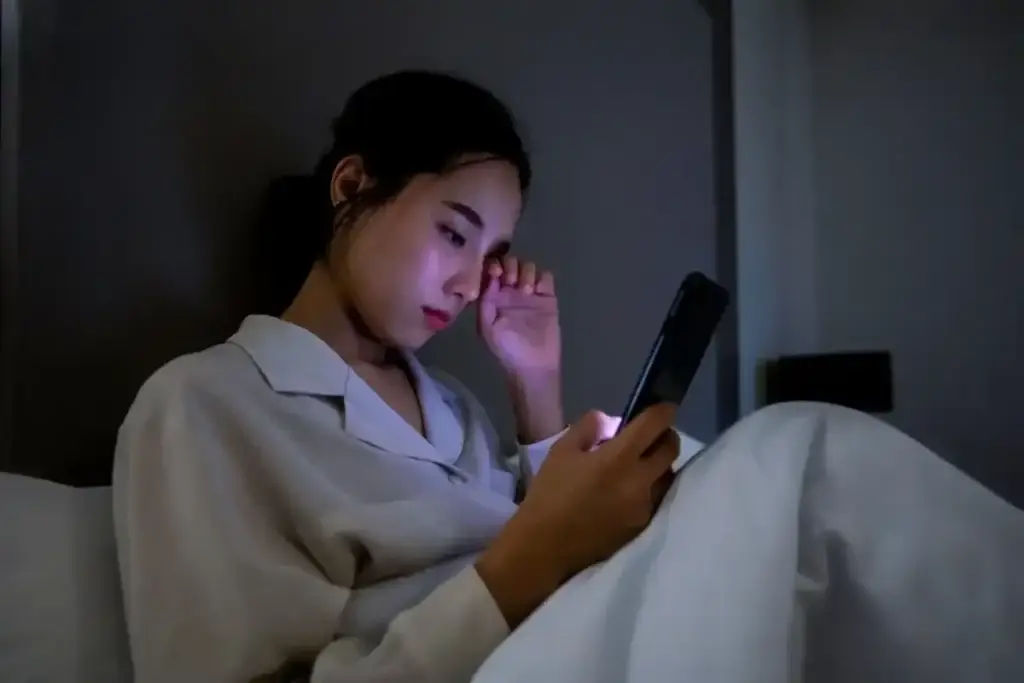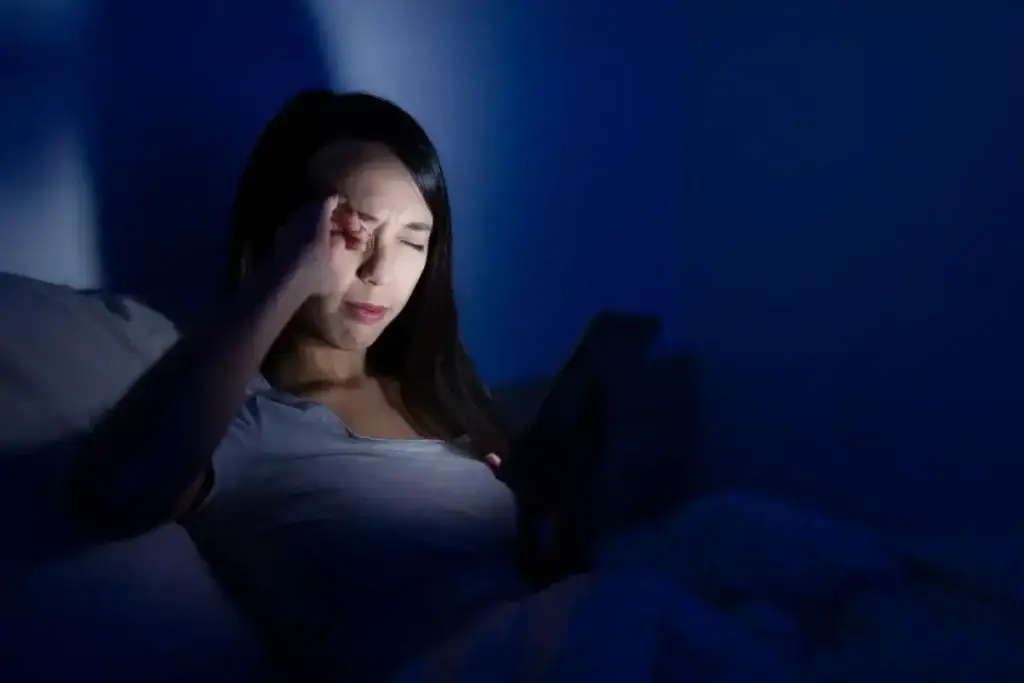Our exposure to screens that emit blue light has expanded enormously in the era of digital dominance. Concerns regarding its effects on sleep patterns and general health have gained traction with this spike. It’s important to separate fact from fiction when it comes to blue light’s impact on our ability to sleep, given the flurry of assertions and denials. Let’s examine this subject in more detail to see how blue-light actually affects our sleep cycles.
Blue-light can have an adverse effect on your general health by interfering with your sleep cycles and possibly lowering your mood and general state of well-being. Additionally, it could exacerbate digital eye strain, which manifests as headaches, impaired vision, and dry eyes.
“What Exactly is Blue Light? A Brief Insight”
Not every hue of light has the same impact. The most disruptive wavelengths at night appear to be blue ones, which are good for you during the day since they improve mood, attentiveness, and reaction speeds. Furthermore, the widespread use of energy-efficient lights and screen-equipped electronics exposes us to more blue wavelengths, particularly after dusk.
“Is Exposure to Night time Light Harmful?”
Certain research indicates a connection between diabetes, heart disease, and obesity with nighttime blue-light exposure, such as working the night shift.
A Harvard study provided insight into the relationship between the condition and obesity and diabetes. Ten participants were given a schedule that progressively changed when their circadian rhythms occurred. Their levels of leptin, a hormone that makes individuals feel full after a meal, decreased, and their blood sugar rose, putting them in the prediabetic range.
“Unlocking the Secrets of Blue-Light: How it Shapes Your Sleep”


Any type of light can inhibit melatonin release, but blue-light has a stronger effect at night. The effects of 6.5 hours of exposure to blue-light were compared to those of exposure to green light of similar brightness by Harvard researchers and their colleagues. The BlueLight caused a two-fold increase in circadian rhythm shift (3 hours vs. 1.5 hours) and suppressed melatonin for roughly twice as long as the green light. “Guarana, C. L., Barnes, C. M., & Ong, W. J. (2021). The effects of blue-light filtration on sleep and work outcomes. Journal of Applied Psychology, 106(5), 784–796.
Researchers at the University of Toronto conducted a study on Blue-Light in which they compared the melatonin levels of individuals wearing blue-light-blocking goggles who were subjected to bright indoor light to those who were exposed to typical dull light without goggles. Given that the hormone levels in the samples were roughly equal.
- Delays Sleep Onset: BlueLight exposure suppresses melatonin, which can postpone the onset of sleep. It may be harder to fall asleep at a decent bedtime as a result of this delay.
- Heightens Alertness: Exposure to blue-light can raise wakefulness and stimulate the brain, which makes it harder to relax and get ready for bed.
- Decreases REM Sleep: Blue light exposure prior to bedtime may reduce the quantity of Rapid Eye Movement (REM) sleep, which is essential for memory consolidation, cognitive performance, and general well-being while you sleep.
- Triggers Eye Strain and Discomfort: Extended exposure to blue-light from screens can lead to dry eyes, irritation, and strain in the eyes, which can worsen general discomfort and make it harder to fall asleep.
Exploring Blue-Light’s Effects on Eye Health


When weighed against the quantity of blue-light exposure from the sun, screen exposure is little. Concerns exist, though, over the long-term consequences of using digital gadget screens. This is particularly valid for excessive screen time and near-eye screen placement.
Nearly all visible blue-light enters past the cornea and lens of the eye and reaches the retina, which is made up of cells that transform light into other forms that the brain can process. This is because blue-light is difficult for human eyes to block.
The vision council Eighty percent of American adults use digital gadgets for longer than two hours a day, according to the Vision Council. Approximately 67% of people multitask with two or more devices. Digital eye strain symptoms are seen in 59% of cases.
According to a research study, over time, prolonged exposure to blue-light may harm retinal cells and result in vision issues including age-related macular degeneration. Additionally, it could be linked to growths on the transparent layer covering the white portion of the eye as well as cataracts and eye cancer. A National Eye Institute vision study found that children are more vulnerable than adults due to the increased absorption of blue-light from digital gadgets in their eyes.
Additionally, when using digital gadgets, people tend to blink less, which exacerbates dry eyes and eye strain. Headaches, impaired vision, and soreness in the neck and shoulders are some common indications of eye strain. 27% to 35% of Americans said they have experienced one of these symptoms after using digital gadgets, according to the Vision Council.




2 Comments
Pingback: The Powerful Effects of Screen Time on Children: How It's Stealing Sleep and Social Skills - 9ledge Feed
Pingback: The Secret to Clear Skin: How Blue Light Affects Your Skin and What You Can Do About It - 9ledge Feed